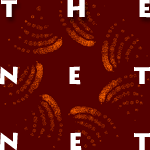I'VE BEEN BACK from JavaOne, Sun's 1997 Worldwide Java Development Conference, for a week. I'm beginning to catch up on my sleep, and have stopped having dreams of slide presentations. I've returned with a sense that while they don't have the proverbial Java toaster yet, Java is developing into a legitimate, powerful programming language.
Or maybe I was brainwashed by the demonstrations. We saw an applet that let us get live telemetry from the Hubble Space Telescope. We saw another applet that let us check the current location of the Space Shuttle. Well, we were told it could, since it was still on the ground at the time of the demonstration. We controlled a demonstration model of the Mars rover with Java. And we saw a pretty snazzy demo of the use of Java with the Human Genome Project. This presentation also yielded the best joke of the conference. A scientist on the HGP demonstrated his applets with some work he's done on fruit flies, and explained, "You spend most of your time looking for the bugs in the code. Well, this is the code in the bugs."
Jokes aside, the conference was a showcase for real world, mission-critical Java. Java's not just for animated Dukes any more.
Duke was in attendance, of course. You could wear several buttons with his image. You could take home a plush stuffed Duke. You could have your picture taken with him. This Duke was a costumed human, and the costume-designer didn't do the best work. It was entertaining to watch Duke walk around. It looked like he (well, she) was floating because the bottom of the costume was so wide.
Aside from the abundance of Duke and JavaOne logos, the conference ran extremely smoothly. The conference itself was run by Softbank Expos, and was a testament to their skill.
If Java can execute this efficiently on my system, give me the JavaOS.
JavaOS, on the other hand, was not a model of efficiency. Several of the 80 "Hacker's Lab" workstations were Java Stations. They were the easiest to get onto, since they weren't very powerful or extensive, and thus not very useful to those of the 8,000 attendees who are still responsible for the servers at home. Hot Java Views definitely needs some interface work, since it took most of us some trial and error to figure out the tricks to do things like telnet to our own machines. This required opening up the telnet program, then switching to another program, then switching back to the telnet program. Just starting it led to a rather blank, gray screen.
While JavaOS was disappointing, the new Java Development Kit (JDK) 1.1.1 was presented as a very powerful step forward for programming. New features and APIs for security, native calls, remote method invocation, and graphics plug up some of the largest holes in JDK 1.0, and increase the flexibility of what Java can do. Perhaps most interesting were the yelps of delight when it was announced that the new 2-D graphics API allowed direct bit manipulation, a feature lacking in 1.0.
Another big theme of JavaOne was taking the language to realms other than traditional computing. Java-based smart cards were featured, and everyone kept talking about the Java-enabled toaster. I'm not to sure about that one. I don't want my toaster interfacing with my computer. The only benefit I can see is if my toaster could read my email, interface with the toaster of whomever is bugging me, and get the second toaster to burn the offender's breakfast.
All in all, I think JavaOne was a worthwhile expenditure of my time and my employer's money, although three days may have been a little too long. By the end I could have gone to the best presentation in the world and slept through it. I did leave convinced that Java is developing in a useful, powerful language that is good for more than sprucing up web pages. I'm still not convinced, however, it's the best solution for making perfect toast.



